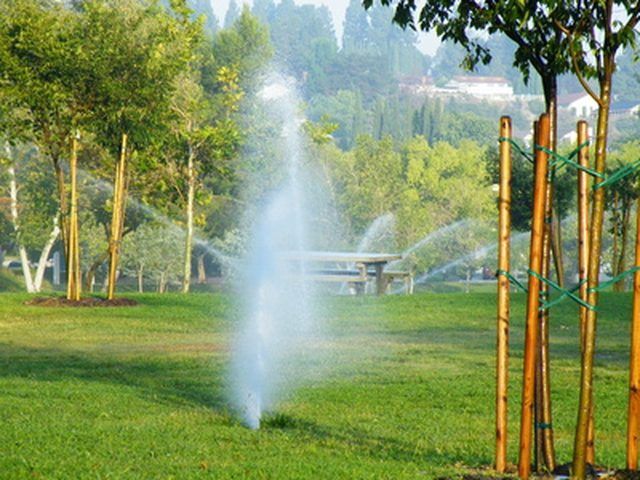Bulbs
Flower Basics
Flower Beds & Specialty Gardens
Flower Garden
Garden Furniture
Garden Gnomes
Garden Seeds
Garden Sheds
Garden Statues
Garden Tools & Supplies
Gardening Basics
Green & Organic
Groundcovers & Vines
Growing Annuals
Growing Basil
Growing Beans
Growing Berries
Growing Blueberries
Growing Cactus
Growing Corn
Growing Cotton
Growing Edibles
Growing Flowers
Growing Garlic
Growing Grapes
Growing Grass
Growing Herbs
Growing Jasmine
Growing Mint
Growing Mushrooms
Orchids
Growing Peanuts
Growing Perennials
Growing Plants
Growing Rosemary
Growing Roses
Growing Strawberries
Growing Sunflowers
Growing Thyme
Growing Tomatoes
Growing Tulips
Growing Vegetables
Herb Basics
Herb Garden
Indoor Growing
Landscaping Basics
Landscaping Patios
Landscaping Plants
Landscaping Shrubs
Landscaping Trees
Landscaping Walks & Pathways
Lawn Basics
Lawn Maintenance
Lawn Mowers
Lawn Ornaments
Lawn Planting
Lawn Tools
Outdoor Growing
Overall Landscape Planning
Pests, Weeds & Problems
Plant Basics
Rock Garden
Rose Garden
Shrubs
Soil
Specialty Gardens
Trees
Vegetable Garden
Yard Maintenance
How to Adjust a Hunter Pop-Up Sprinkler Head
How to Adjust a Hunter Pop-Up Sprinkler Head. Hunter Industries manufactures three pop-up sprinkler heads recommended for residential and light commercial use, the PGJ, PGP and I-20. The adjustment is the same for all three and also for many of their larger sprinklers used for civic and athletic fields. Each sprinkler has an access hole in its...

Hunter Industries manufactures three pop-up sprinkler heads recommended for residential and light commercial use, the PGJ, PGP and I-20. The adjustment is the same for all three and also for many of their larger sprinklers used for civic and athletic fields. Each sprinkler has an access hole in its rubber cap that provides access to the arc travel stop and another access hole that provides access to the nozzle lock. You need Hunter's specialized rotor tool and a selection of nozzles to dial in your sprinklers for optimized coverage.
Things You'll Need
Hunter rotor key
Hunter rotor collar (optional)
Nozzles
Select the correct nozzle for head-to-head coverage. Every Hunter rotor comes with an assortment of nozzles. The size of the opening in the nozzle will control the radius covered by the rotor. The larger the opening, the farther the rotor will throw the water, given sufficient pressure. The performance characteristics of each nozzle are detailed in charts that come with the rotors and are printed in several Hunter publications, but you can also find what you're looking for by trial and error. The goal is for the arc of each sprinkler to reach to the next sprinkler in the system. This is called "head-to-head" coverage.
Install the nozzle by pressing it into the opening until it is flush with the rotor body. Secure the nozzle by inserting the metal end of the rotor key into the arrow on the rubber cap and turning the set screw clockwise. Do not screw the set screw down to the point it will interfere with the water stream. This job is much easier if you have the specialized collar that will hold the rotor body up and keep it from retracting into the housing.
Find the right hand limit of travel. If you turn the rotor by hand, you will find that it can only turn in one direction until it hits its limit, then can only turn in the other direction until it hits the limit in that direction. Looking down on the rotor from behind it--the arrow will indicate the direction of spray--the right hand limit is fixed and the left hand limit is adjustable. If the right hand limit points directly along the edge of your desired coverage, skip to Step 5.
Turn the collar that locks the rotor body into the housing counter-clockwise until it is free. Lift the rotor body up until the gear on the bottom clears the two ridges in the housing--about one inch before it is completely free of the housing. Point the direction of spray arrow at your desired right hand edge, lower the body back into the housing and lock the collar.
Turn the rotor body counter-clockwise by hand until it reaches its left limit and compare the direction of spray arrow with your desired left edge. Turn the body clockwise to approximately the middle of its travel, insert the plastic end of the rotor key into the hole in the cap that has two arrows pointing to a plus sign and a minus sign. Turning the key toward the minus sign moves the left travel limit closer to the right limit, closing the coverage arc. Turning the key toward the plus sign moves the left travel limit away from the right limit, increasing the coverage arc. Adjust until the left travel limit is where you want it.
Tips & Warnings
Travel limits under actual operation don't always perfectly match the limits when you turn the rotors by hand. Once you have the adjustments made roughly by hand, turn the zone on and make the final adjustments with the water running. Don't worry about getting wet. It's unavoidable.